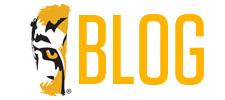In the early 1980s, 401(k) plans were only available at a handful of large companies. Today, some 94% of private employers offer them. That’s incredible progress!
A 401(k) plan is a retirement account that you can only access through an employer. You contribute a portion of your salary to the plan, and if you choose to put that contribution in a traditional 401(k), it isn’t taxed until you withdraw the money, allowing your investments to grow over time without being taxed. (Note: You will pay penalties if you take out the money before a set retirement age, as defined by the plan.) And, as an added bonus, many employers will match some of your contributions.
What You Should Do Now
1. If you’re not saving for retirement yet, start now.
You would be surprised—if you save 15% of your income every month now, you will likely amass enough money to retire on. Fifteen percent might sound like a big chunk out of your budget, but when you think about it, it’s actually a small contribution toward years and years of work-free living.
2. If you don’t know how much you should be contributing, calculate it!
It’s best to know how much you need to be putting away and to make that amount your goal if you can’t contribute that amount today. Use this retirement calculator from Nerdwallet to get to the contribution amount you need.
3. Start small.
It’s best to start small rather than not start at all. If your goal is to contribute 15% of your salary, start with whatever it takes to get the company match, and more, if you can afford more, and then increase it by 2% every six months until you get to your goal. Small increases have a tiny impact on your budget and a huge impact on your nest egg. If you feel like you need a guideline to follow, consider these bare minimums:
- Age 25: Contribute at least 5%
- Age 30: Contribute at least 10%
- Age 35: Contribute at least 15%
- Age 45: Contribute at least 20%
However, the general rule is that the more you can contribute, the better—always!
If your employer doesn’t provide a 401(k) plan, you can set up automated transfers from your bank account into your traditional or Roth IRA. Set these up so that the money comes out the day after you’re paid so you won’t be tempted to spend it before you save.
Ultimately, retirement is an important goal that shouldn’t be put on the back burner. So here’s something to consider: If you can afford to contribute enough to take advantage of any 401(k) matching you get through work, then try to put at least that much away. Otherwise, you may be overlooking free money that could help you live the retirement you want decades from now.
If you have questions about retirement planning and would feel more comfortable getting guidance about your financial needs through the credit union, consult Tigers Community Financial Advisors. We’ll help you build an investment strategy to reach your retirement goals–get started today!
*Information shown is for illustrative purposes only and is not intended as investment, legal or tax planning advice. Please consult a financial adviser, attorney or tax specialist for advice specific to your financial situation. Securities offered through LPL Financial, member FINRA/SIPC. Insurance products offered through LPL Financial or its licensed affiliates. Tigers Community Credit Union and Tigers Community Financial Advisors are not registered broker/dealers and are not affiliated with LPL Financial. Investment Advisory Services offered through LPL Financial, a Registered Investment Advisor.




